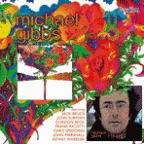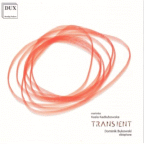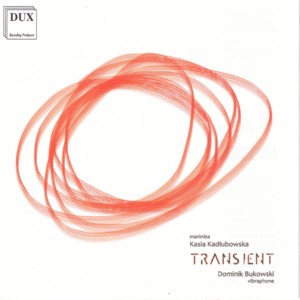Record Reviews
4 Reviews Found. Use search to find more reviews or follow the links in the review text.
  | MICHAEL GIBBS ~ MICHAEL GIBBS / TANGLEWOOD 63
VOCALION 4253 (Barcode: 765387425326) ~ UK ~ Jazz
Recorded: 1969 - 1970 Released: 2005
Composer / arranger / bandleader / trombonist Michael GibbsFind albums by this artist was born in Rhodesia (now Zimbabwe). In his early twenties he moved to the US, where he studied both Jazz and Classical music at the Berklee College of Music, the Boston Conservatory and the Tanglewood Institute, where he studied with renowned classical composers Aaron CoplandFind albums by this artist and Lukas FossFind albums by this artist. In 1965 Gibbs settled in London and immediately was absorbed into the burgeoning local Jazz scene, first as a trombonist, and later when he stopped to play the instrument, as a composer, arranger and bandleader. Over the years he assembled an impressive body of work as a composer, which has been considered as some of the most innovative and daring forays into the fusion of Classical, Jazz and Rock. He recorded many of his compositions using large ensembles, which comprised of the best British and later also European Jazz musicians, all of which are considered masterpieces. He also composed music for cinema and created many incredible arrangements for albums in the Rock and Jazz areas. This album combines his two first albums, composed for and performed by huge ensembles including brass, string and rhythm sections and including around 30 musicians. The names of the participants resemble the “who’s who” of the British Jazz scene at the time and the main soloists are: Chris SpeddingFind albums by this artist, Ray RussellFind albums by this artist (guitar), Kenny WheelerFind albums by this artist (trumpet), Alan SkidmoreFind albums by this artist, John SurmanFind albums by this artist, Mike OsborneFind albums by this artist (sax), Gordon BeckFind albums by this artist (piano), Jack BruceFind albums by this artist, Brian OdgersFind albums by this artist (bass), Tony OxleyFind albums by this artist, John MarshallFind albums by this artist (drums) and many more. The music is quite incredible of course, very difficult to classify, as it flows between genres and musical landscapes disregarding any preconceptions. Gibbs is a master at creating an internal tension in his scores, which is often expressed by the role the brass and rhythm sections play against each other, with the brass section representing the jazzy elements and the rhythm section (especially the guitar) the rock elements. The music is often contemplative and moves slowly, similarly to many of the modern Classical music pieces, influenced obviously by the composer’s teachers and resembling sometimes even the work of Philip GlassFind albums by this artist. Definitely not easy listening, but a highly rewarding intellectual experience. For the lack of a better alternative I’ve decided to classify it under Jazz, but this music is truly beyond classification and constitutes a class of its own. Fascinating!
| | | CD 2 Remastered Recommend To A Friend |
  | KASIA KADLUBOWSKA / DOMINIK BUKOWSKI ~ TRANSIENT
DUX 1221 (Barcode: 5902547012216) ~ POLAND ~ Classical
Recorded: 2012 Released: 2015
This is the debut album by Polish marimba player / composer Kasia KadlubowskaFind albums by this artist recorded in a duo format with renown Polish Jazz vibraphonist / composer Dominik BukowskiFind albums by this artist. The album presents nine compositions, two of which are original compositions (one each) by Kadlubowska and Bukowski and the rest are by contemporary Classical composers like Terry RileyFind albums by this artist, Philip GlassFind albums by this artist, Steve ReichFind albums by this artist, Arvo PartFind albums by this artist, Eric SatieFind albums by this artist and American marimba player / composer Paul SmadbeckFind albums by this artist.
As the names of the composers suggest, the music is mostly contemporary Classical Music, with belongs to the Minimal Music idiom. Although most of the music was not originally written for marimba or vibraphone, it was arranged and transcribed for these instruments by Kadlubowska and Bukowski.
Marimba and vibraphone, although both percussion instruments, are of course capable of playing melody and harmony, which means that the music offers a lot of melodic content, kept within the limitations of Minimal Music, which calls for slowly developing themes and cyclic repetition. It can be quite demanding on the listener, who is not a priori a fan of the genre, but it is great for relaxation and meditation, in addition to its strictly musical values.
Both Kadlubowska and Bukowski play with incredible feeling and obvious virtuosity, and despite the intrinsic lethargy of the music, the albums offers a diversified listening experience to open-minded listeners. Minimal Music has its fans around the world and enjoyed a peak of popularity during the New Age explosion between the 1970s and 1990s, but a steady interest in it remains in the Classical field over the years.
Bukowski’s appearance on this album, which is rather unexpected since his main field of activity if Jazz, proves his diversity and well schooling, as well as highly aesthetic approach to music in general. The two original composition stand proudly shoulder to shoulder with the well-known Classical material, adding another level of credibility to this album.
I have no idea why it took seven years for this album to arrive on my operating table, but as usual better late than never, as it is definitely worth exploring and a great fun to listen to.
| | Updated: 23/05/2021Posted: 23/05/2021 | CD 1 Recommend To A Friend |
  | WACLAW ZIMPEL ~ LINES
INSTANT CLASSIC 042 ~ POLAND ~ Avant-Garde Jazz-Classical Fusion
Recorded: 2015 Released: 2016
This is the first solo album by veteran Polish Jazz / Avant-Garde clarinetist / composer Waclaw ZimpelFind albums by this artist. He plays different clarinets and keyboards and performs six pieces, five of which are his original compositions and one is a renaissance cannon.
The music is almost entirely written, as opposed to Zimpel´s usual modus operandi, which primarily involves improvisation. The affiliation with minimal music is felt very strongly and familiar patterns appearing in the works of American composers like La Monte YoungFind albums by this artist, Terry RileyFind albums by this artist, Steve ReichFind albums by this artist or Philip GlassFind albums by this artist can be also heard here. This does not imply of course that Zimpel uses ideas created by others, but the resemblance, both aesthetically and sonorically, is very audible. The music is also very contemplative and monotonic, which of course is rather difficult for listeners not familiar with this musical idiom.
Zimpel´s usage of several overdubbed instruments to create an almost orchestral effect is the most interesting aspect of this album, which is fully explored in the title track. All of the tracks use the same technique of overdubbing, which is of course possible due to the fact that the music is written and not spontaneously improvised.
One has to respect Zimpel for his consistency and desire to create his own unique music, even if this means that his audience will be rather limited. Also the support he gets from small independent labels, like Instant ClassicFind albums on this label which released this album, is very significant to his career and development.
Overall this is an album intended to be listened to by connoisseurs of minimal music or people looking for adventurous and unusually sounding recordings. With certain open-mindedness this music can bring many surprisingly pleasing musical moments amid its weirdness.
| | Updated: 12/04/2019Posted: 02/01/2017 | CD 1 Digipak Recommend To A Friend |
  | WACLAW ZIMPEL TO TU ORCHESTRA ~ NATURE MOVES
FOR TUNE 0036 (Barcode: 5902768701340) ~ POLAND ~ Jazz-World Fusion
Recorded: 2013 Released: 2014
This is the debut album by Polish Jazz clarinetist / composer / bandleader Waclaw ZimpelFind albums by this artist and his nonet called To Tu OrchestraFind albums by this artist (the name is probably a wink in the direction of the legendary Warsaw club Pardon, To Tu), which includes saxophonist Pawel PostaremczakFind albums by this artist, flautist Dominik StrycharskiFind albums by this artist, hurdy-gurdy player Maciej CierlinskiFind albums by this artist, pianist Jacek KitaFind albums by this artist, bassists Wojciech TraczykFind albums by this artist and Mike MajkowskiFind albums by this artist and drummers Pawel SzpuraFind albums by this artist and Hubert ZemlerFind albums by this artist. The album includes six original compositions, arranged into three mini suites, of one, three and two parts respectively.
The music is in many respects a continuation of Zimpel´s earlier work with the group Hera, which combines elements of Avant-Garde, Jazz and contemporary Classical music with World Music from all over the world. The strongest influence on this album is minimal music pioneered decades earlier by Philip GlassFind albums by this artist, Steve ReichFind albums by this artist, Terry RileyFind albums by this artist and others, which Zimpel embraces, most evidently in the first of the three mini suites but in fact throughout the entire album. The repeated structures returning cyclically, typical in minimal music, which are normally produced by electronic or acoustic orchestral patterns, are created here by World Music patterns, like Balinese gamelan music, slowly changing and intensifying until they reach a massive sound, but do not reach an expected crescendo. Minimalism continues to be present in the rest of the compositions, simply changing the geographic colorization, using Japanese, Middle Eastern and other folkloristic influences.
Zimpel is undoubtedly a master of atmosphere and building tension, which accompany his earlier work as well, but come to a fruition and perfection on this album. The large ensemble allows him to "paint" much denser multilayered vistas, which move freely in the World Music universe. The music does not actually get into Jazzy improvisation until the very last piece on the album, so listeners anticipating that facet of Zimpel´s music are in for a disappointment.
What emerges here is a new type of minimal music which amalgamates the earlier forms of minimalism with World Music, creating a World Minimal Music. Zimpel evidently had a great fun creating this music and it is also very listenable, but the fundamental question as to what Zimpel wanted to achieve remains open, at least in my case. I have not been overwhelmed neither by the aesthetics nor by the musical result, which after all simply states nihil novi sub sole. But it is very well done for sure!
| | Updated: 12/04/2019Posted: | CD 1 Recommend To A Friend |
|







